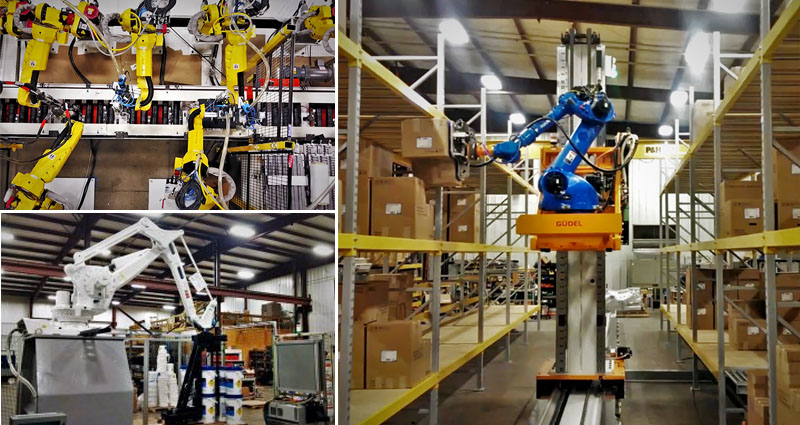Robotic systems have revolutionized industries across the globe, providing numerous benefits that enhance efficiency, productivity, and safety. One key component of these systems is the industrial robotic arm, which plays a vital role in automating tasks and streamlining processes.
Enhancing Efficiency and Productivity with Industrial Robotic Arms
Industrial robotic arms have emerged as a game-changer in various industries, revolutionizing the way tasks are performed. These sophisticated machines, equipped with advanced sensors and precise programming, offer a multitude of benefits. One of the primary advantages of utilizing industrial robotic arms is the significant enhancement in efficiency and productivity. With their ability to perform repetitive tasks with unmatched accuracy and speed, robotic arms can outperform human workers in terms of output and consistency.
By automating repetitive processes, industrial robotic arms eliminate human error and reduce the risk of accidents in hazardous environments. This not only ensures a safer work environment but also leads to increased productivity and reduced downtime. Moreover, these robotic systems can work continuously without breaks, thereby maximizing production efficiency and minimizing operational costs.
Improved Quality Control and Precision
Robotic systems bring an unparalleled level of precision and accuracy to various industries. Industrial robotic arms, in particular, are designed to execute tasks with exceptional repeatability, ensuring consistent quality control. By eliminating variations caused by human factors, such as fatigue or inconsistent technique, robotic arms produce uniform and high-quality outputs.
Additionally, robotic arms can be programmed to perform intricate and delicate operations with unmatched precision. This level of accuracy proves invaluable in industries that require intricate assembly processes, such as electronics or automotive manufacturing. With the ability to perform repetitive tasks flawlessly, robotic systems significantly reduce the margin of error, leading to improved product quality and customer satisfaction.
Enhanced Workplace Safety
Ensuring workplace safety is of utmost importance in any industry. Robotic systems play a crucial role in this aspect by mitigating risks associated with hazardous tasks. Industrial robotic arms can be employed in environments where human workers might be exposed to dangerous conditions, such as extreme temperatures, toxic substances, or heavy machinery.
By assigning these risky tasks to robotic systems, companies can protect their employees from potential injuries or health hazards. The inherent precision and accuracy of robotic arms minimize the likelihood of accidents, further enhancing workplace safety. This not only safeguards the well-being of workers but also helps companies comply with stringent safety regulations, avoiding legal complications.
Increased Flexibility and Adaptability
Robotic systems offer unparalleled flexibility and adaptability, making them suitable for a wide range of applications across industries. Industrial robotic arms, with their versatile configurations and programmable capabilities, can be easily adapted to perform various tasks on different production lines. This inherent flexibility enables companies to swiftly reconfigure their manufacturing processes in response to market demands or product changes.
Furthermore, industrial robots can be equipped with sensors and intelligent systems that enable them to adapt to dynamic environments. These smart robots can perceive and respond to changes in their surroundings, allowing them to collaborate with human workers seamlessly. This human-robot collaboration enhances operational efficiency, as robots take care of repetitive tasks, freeing up human workers to focus on complex decision-making or creative work.
Cost Savings and ROI
While the initial investment in robotic systems may seem significant, the long-term benefits and cost savings they bring justify the expenditure. Industrial robotic arms not only improve productivity and output quality but also result in substantial cost reductions. By automating labor-intensive tasks, companies can reduce their workforce requirements, resulting in long-term cost savings on salaries, benefits, and training.
Additionally, the efficiency and precision of robotic systems minimize material waste and optimize resource utilization. By reducing errors and maximizing production uptime, companies can avoid costly rework or product recalls. The return on investment (ROI) of implementing robotic systems can be significant, with cost savings accumulating over time, leading to improved profitability and competitiveness.
In conclusion, robotic systems, particularly industrial robotic arms, offer a wide range of benefits to various industries. From enhancing efficiency and productivity to improving quality control and workplace safety, these advanced machines have become indispensable in modern manufacturing processes. With their flexibility, adaptability, and long-term cost savings, robotic systems are poised to continue revolutionizing industries and shaping the future of automation.












